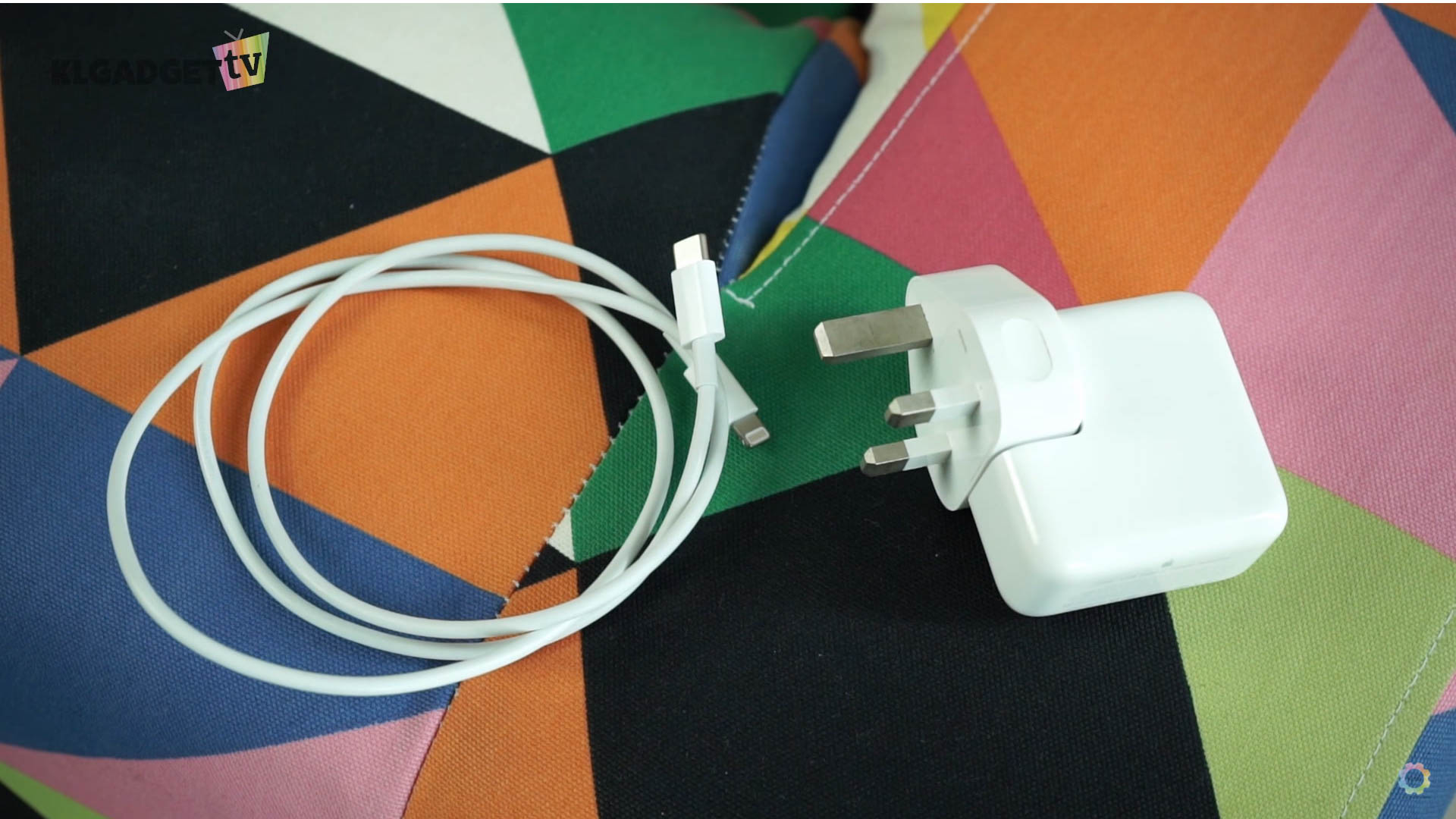I have been actively using both the iPhone 8 and 8 Plus for the past few weeks, many of my friends posted the same question to me – why does these two phones matter when there’s an iPhone X? First, the iPhone 8 isn’t a bad phone, no doubt it still uses the four year old surfboard design that we have been so accustomed to, but it is still a form factor that easily appeals to one that wants a new iPhone. Second, it is still the fastest performing iPhone you can own if you are not prepared to spend a lot of cash for the iPhone X. Lastly, it is the new iPhone for those who doesn’t require Face ID or a thin-bezel display. But, for all of these reasons, is it worth the purchase?
Just like the last three generations of iPhones, Apple lets you choose between a smaller and larger device. For the first time, I actually like the fact that Apple has used glass for the iPhone’s back, not just because of wireless charging, it also gives the phone a better grip which I find it less prone to dropping when compared to my iPhone 7 Plus. As a matter of fact, the glass back made the iPhone 8 and 8 Plus heavier than their predecessors though not significant, I like the sturdiness and haven’t got too frustrated about it. However, a glass back also mean that you will have to worry about cracking the glass, though Apple says that it is the strongest glass they have ever sourced, ultimately it is still glass. Period.
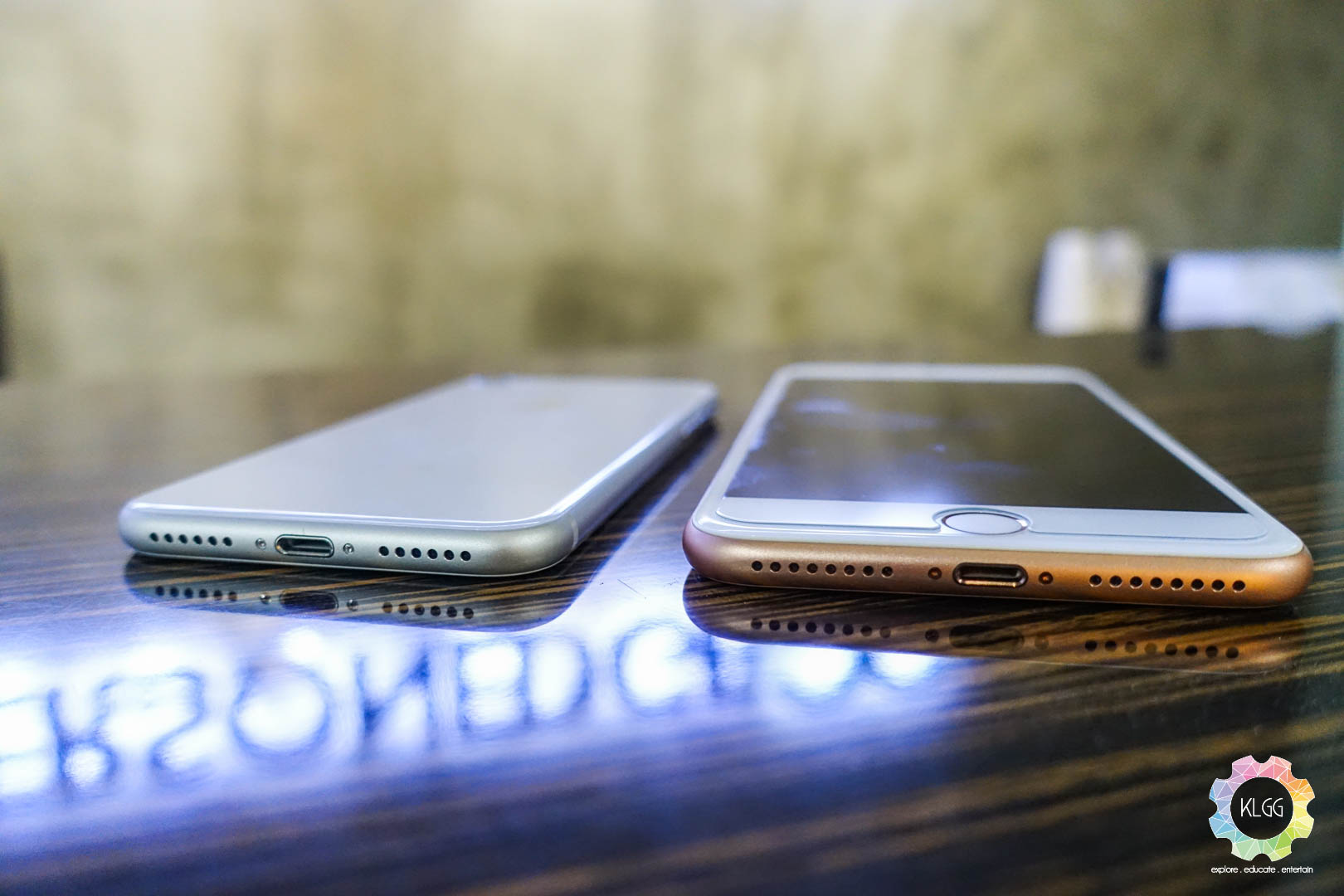 The removal of the 3.5mm headphone jack since the iPhone 7 has certainly inspired some Android smartphones while angering users, that fashion continues to be the case on the iPhone 8 and 8 Plus, if you forget your Lightning to 3.5mm adapter or charge your Bluetooth headphones, you are really going to hate the iPhone. At some point, you will eventually get used to connecting a Bluetooth headphone if you do require it, and since both phones support Bluetooth 5.0, we should also expect more headphones to come with that Bluetooth version in the near future which will have better audio quality.
The removal of the 3.5mm headphone jack since the iPhone 7 has certainly inspired some Android smartphones while angering users, that fashion continues to be the case on the iPhone 8 and 8 Plus, if you forget your Lightning to 3.5mm adapter or charge your Bluetooth headphones, you are really going to hate the iPhone. At some point, you will eventually get used to connecting a Bluetooth headphone if you do require it, and since both phones support Bluetooth 5.0, we should also expect more headphones to come with that Bluetooth version in the near future which will have better audio quality.
Speaking of audio, Apple has greatly improved the speakers on both the iPhone 8 and 8 Plus with a more dynamic soundstage and 25% louder volume, I can certainly vouch for that as I used it almost every day for playing my Spotify playlist, especially on the iPhone 8 Plus’ dual speakers, bass response is extremely punchy with great clarity even at max volume, I would even go as far to say that it is even much better than most laptop speakers.
 As for the iPhone 8 and 8 Plus’ display, the True Tone display technology is finally brought over from the iPad Pro, which most users with eye strain issues will appreciate, it works by detecting the ambient lighting and adjusts the color tone accordingly in real time, therefore making the viewing experience to be more comfortable, a great feature if you do a lot of reading.
As for the iPhone 8 and 8 Plus’ display, the True Tone display technology is finally brought over from the iPad Pro, which most users with eye strain issues will appreciate, it works by detecting the ambient lighting and adjusts the color tone accordingly in real time, therefore making the viewing experience to be more comfortable, a great feature if you do a lot of reading.
What makes every new iPhone truly impressive is the performance improvements over the previous model, the iPhone 8 and 8 Plus are powered by the A11 Bionic chip, which is also present on the iPhone X, it is a hexa-core configuration that comprises of two high performance and four high efficiency cores, which in this case makes it much faster and efficient than the A10 Fusion.
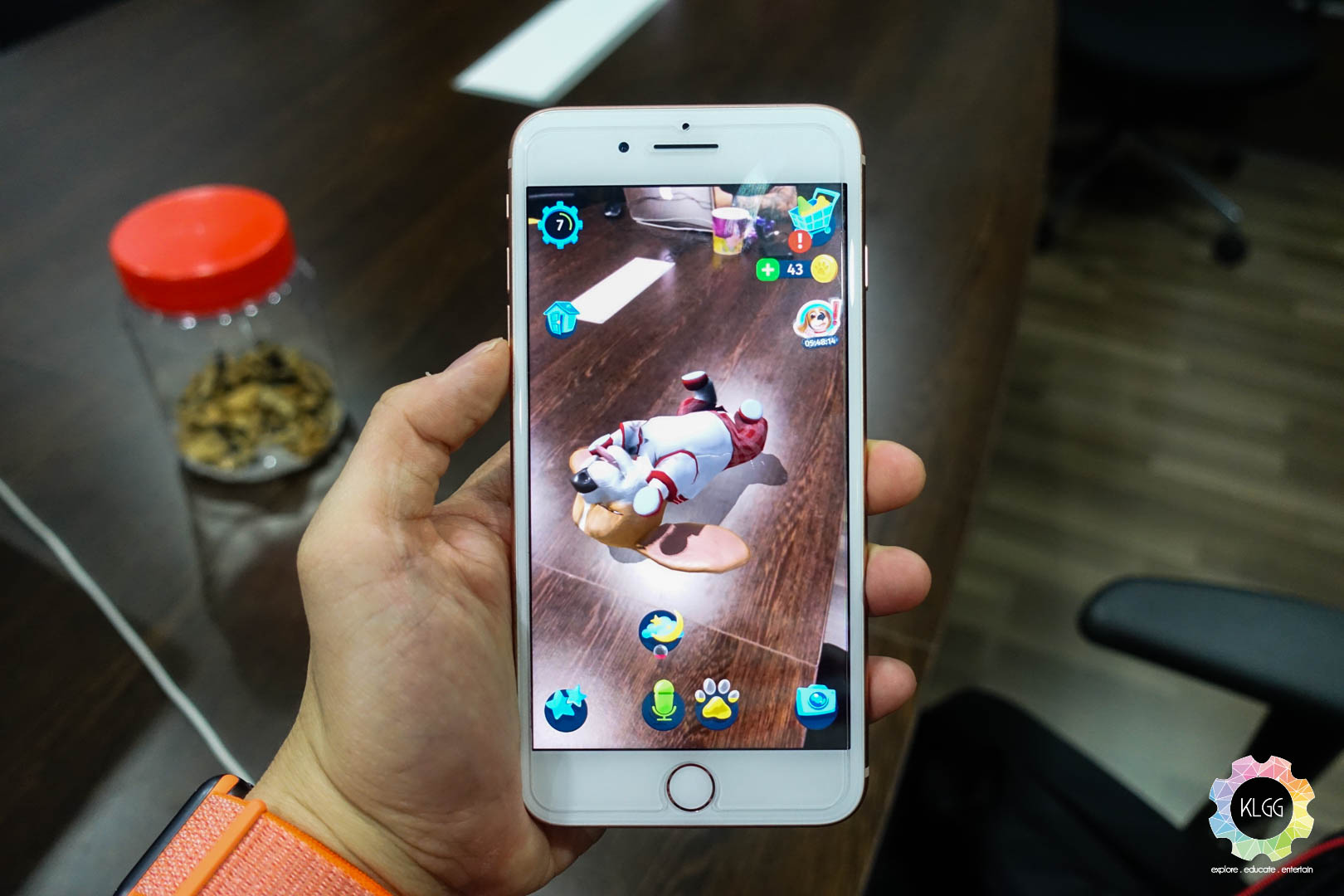 The A11 Bionic’s performance is best experienced when it comes to augmented reality apps and games, I was impressed with how well the iPhone 8 and 8 Plus were able to detect depth and surfaces without dedicated sensors like Google Tango devices, objects are smooth to interact and most importantly, the phones don’t heat up terribly and consume heavy battery like I have experienced on two Google Tango smartphones. In addition, the App Store also has far more interesting AR apps than Google’s Tango platform, I use Quartz to read interesting news and it allows me to view certain objects in AR, and I played Tamadog, which I need to virtually keep a beagle happy in my iPhone by keeping it well fed.
The A11 Bionic’s performance is best experienced when it comes to augmented reality apps and games, I was impressed with how well the iPhone 8 and 8 Plus were able to detect depth and surfaces without dedicated sensors like Google Tango devices, objects are smooth to interact and most importantly, the phones don’t heat up terribly and consume heavy battery like I have experienced on two Google Tango smartphones. In addition, the App Store also has far more interesting AR apps than Google’s Tango platform, I use Quartz to read interesting news and it allows me to view certain objects in AR, and I played Tamadog, which I need to virtually keep a beagle happy in my iPhone by keeping it well fed.
iOS 11 requires no further introduction for avid iPhone users, as you are still getting the very same user experience as previous iPhones, the new App Store is great at recommending apps with stories from developers, you get a new notifications screen that you either love or hate, the pages you have to go through gets annoying as you install more apps, and the new Control Center can be pretty useful for toggling settings with 3D Touch.
There is however one feature that I find iOS to still perform better than Android – the soft keyboard, like it or not, despite the numerous annoying times it auto-corrected my words, it works great with the ability to select words by simply holding and swiping on it, and it gives me dedicated keys to @ and # when I’m writing a post on Instagram or Twitter. Also, if you own other Apple products, such as a Mac or iPad, iOS still does the best when it comes to syncing and handing off tasks to these devices, and it has gotten more reliable on iOS 11.
 Apple has kept the iPhone 8’s main camera resolution at 12-megapixels with a f/1.8 lens, the telephoto lens on the 8 Plus remains a f/2.8 lens with no optical stabilization, however they now have larger and faster sensors that aims to deliver significantly better low light performance over the previous model, the camera flash has also been upgraded to a quad LED True Tone flash with Slow Sync, which helps to balance exposure on subjects when used in low light.
Apple has kept the iPhone 8’s main camera resolution at 12-megapixels with a f/1.8 lens, the telephoto lens on the 8 Plus remains a f/2.8 lens with no optical stabilization, however they now have larger and faster sensors that aims to deliver significantly better low light performance over the previous model, the camera flash has also been upgraded to a quad LED True Tone flash with Slow Sync, which helps to balance exposure on subjects when used in low light.
[fshow url=https://flic.kr/s/aHskrRGEuo]
I have managed to put it to the test with the Huawei Mate 10 and Galaxy Note 8, which you can view in the image samples down below. In my tests, the iPhone 8 and 8 Plus has certainly improved when it comes to details and noise levels, the camera software tends to keep colors vibrant but also keeping them close to real life colors, the improved photography capabilities can also be attributed to the A11 Bionic’s ISP.
iPhone 8 Low Light Camera Samples
[fshow url=https://flic.kr/s/aHsma2zQvP]
Huawei Mate 10 Low Light Camera Samples
[fshow url=https://flic.kr/s/aHsma2zQvi]
Galaxy Note 8 Low Light Camera Samples
[fshow url=https://flic.kr/s/aHsma2zQug]
What’s also new on the iPhone 8 and 8 Plus camera capabilities is the support for recording 4K 60 fps videos with stabilization, it is the only phone camera capable of doing so at the moment, which you can record extremely clear footage and view them in buttery smooth frame rates if your computer could handle it.
 If you love shooting slow motion videos, the iPhone 8 can now capture 240 fps videos in 1080p, this is unarguably the best phone for videography if you can’t get hold of phones like the LG V30.
If you love shooting slow motion videos, the iPhone 8 can now capture 240 fps videos in 1080p, this is unarguably the best phone for videography if you can’t get hold of phones like the LG V30.
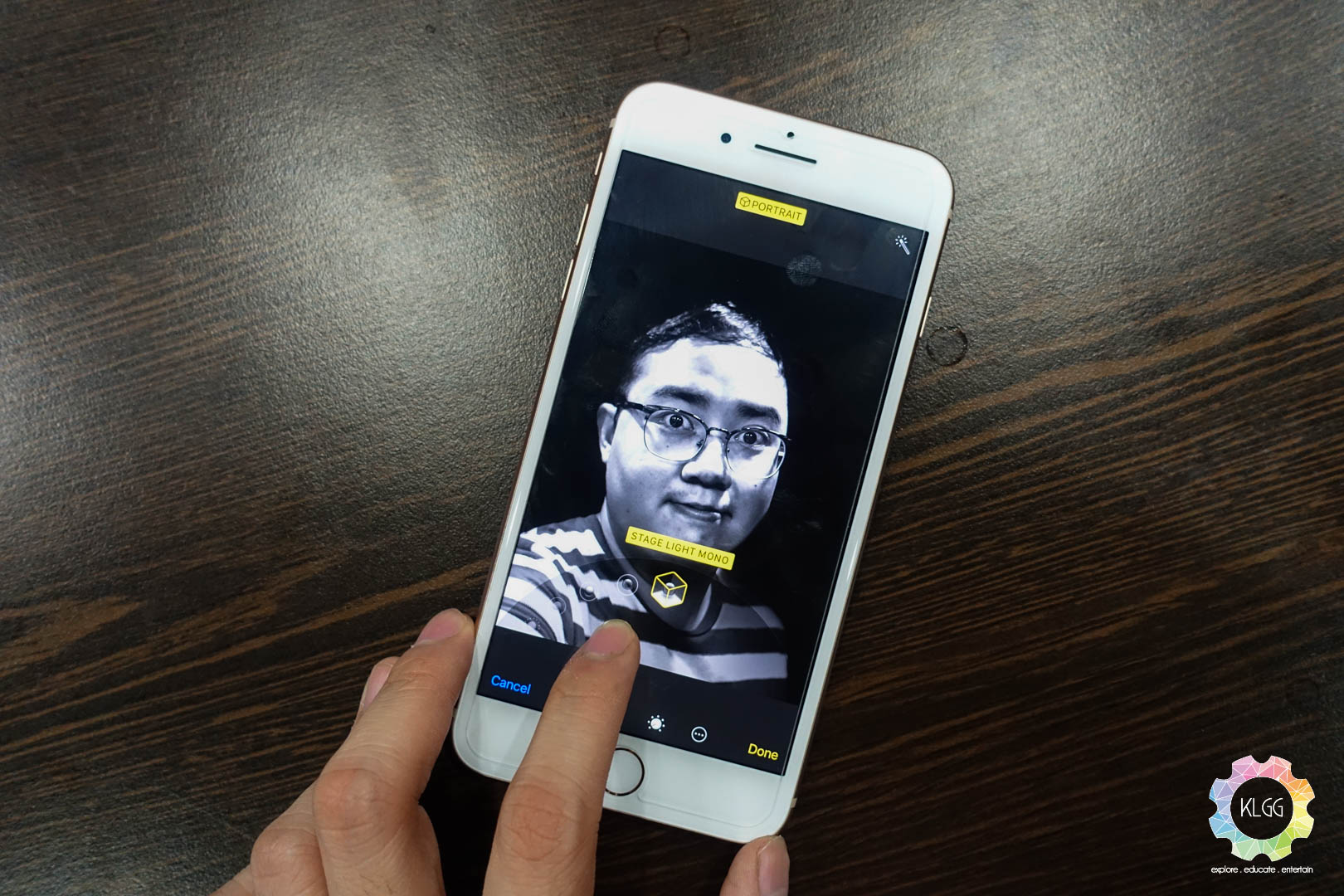 As portrait modes have become a trend since the iPhone 7 Plus, Apple is taking it to the next level on the iPhone 8 Plus with Portrait Lighting, which aims to emulate various lighting effects onto portraits that can make faces look attractive, as if it were taken in a professional photography studio, it is a fun feature that works well when used in an environment with sufficient and properly exposed natural lighting.
As portrait modes have become a trend since the iPhone 7 Plus, Apple is taking it to the next level on the iPhone 8 Plus with Portrait Lighting, which aims to emulate various lighting effects onto portraits that can make faces look attractive, as if it were taken in a professional photography studio, it is a fun feature that works well when used in an environment with sufficient and properly exposed natural lighting.
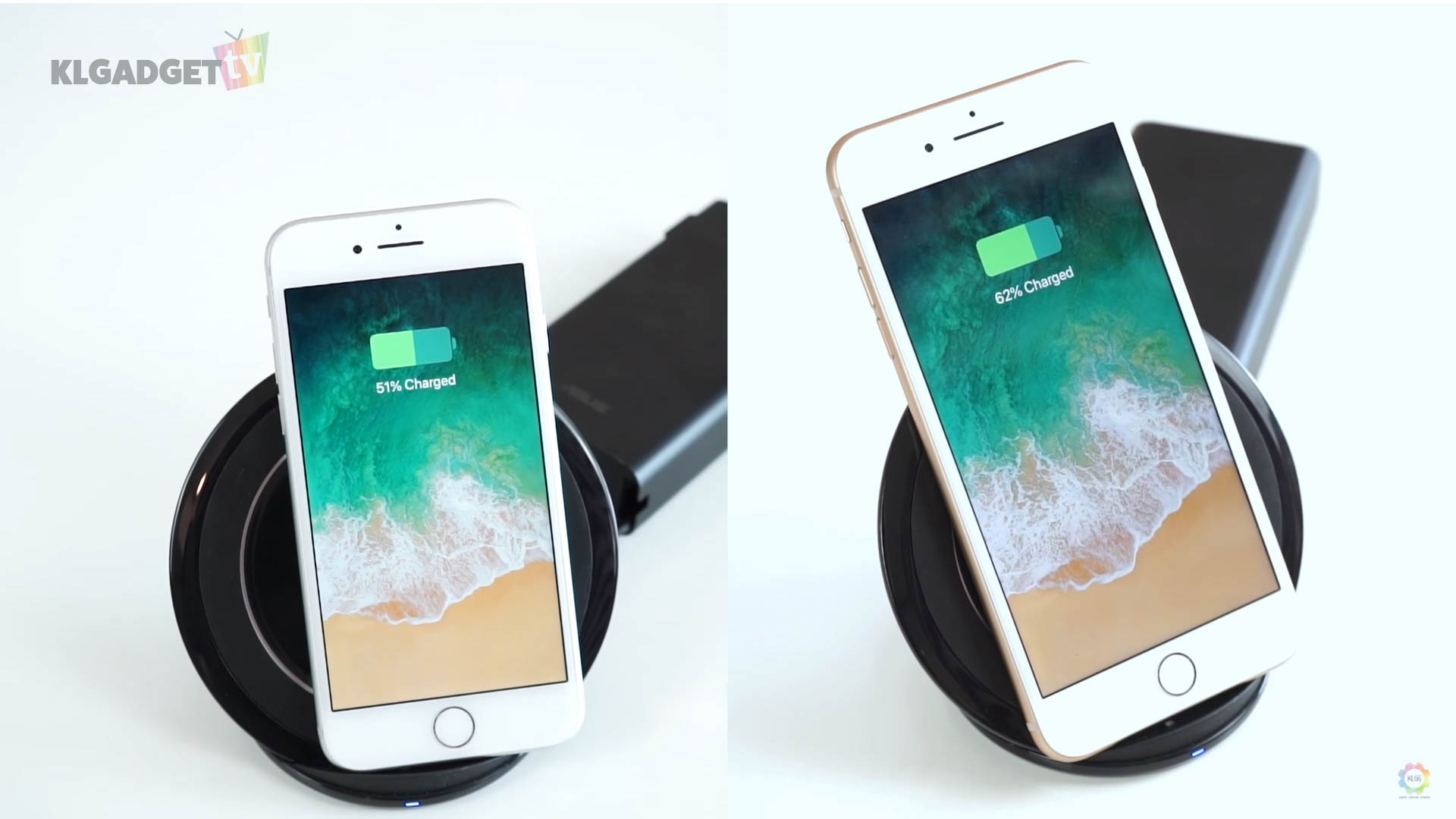 Both the iPhone 8 and 8 Plus’ battery were able to hold up till the next working day when used moderately, it is impressive considering the fact that the phones have smaller batteries than their predecessors. Wireless charging will work on any Qi standard wireless chargers, both phones will charge at a decent but slower than usual speed on a Samsung Fast Wireless Charger, the iPhone 8 will get charged in 2 hours or more on wireless charging when fully drained.
Both the iPhone 8 and 8 Plus’ battery were able to hold up till the next working day when used moderately, it is impressive considering the fact that the phones have smaller batteries than their predecessors. Wireless charging will work on any Qi standard wireless chargers, both phones will charge at a decent but slower than usual speed on a Samsung Fast Wireless Charger, the iPhone 8 will get charged in 2 hours or more on wireless charging when fully drained.
Although the iPhone 8 and 8 Plus finally support fast charging, Apple hasn’t included the 29W adapter and USB-C to Lightning cable in the box, which will cost RM348 of damage if you want that and it is just ridiculous. I was lucky to have the 29W adapter that came together with my 12-inch MacBook, hence I was able to try that out by merely purchasing the cable, I have to admit that it is the most expensive data cable I have purchased in my entire lifetime, but it is worthwhile when you can quickly give the iPhone a 50% charge in merely 30 minutes. However, I really think Apple should stop bundling that 5W charger and standard Lightning cable in the box, considering that users are already paying a premium for the iPhone 8, the fast charging package should come as a standard like Android smartphones.
Verdict
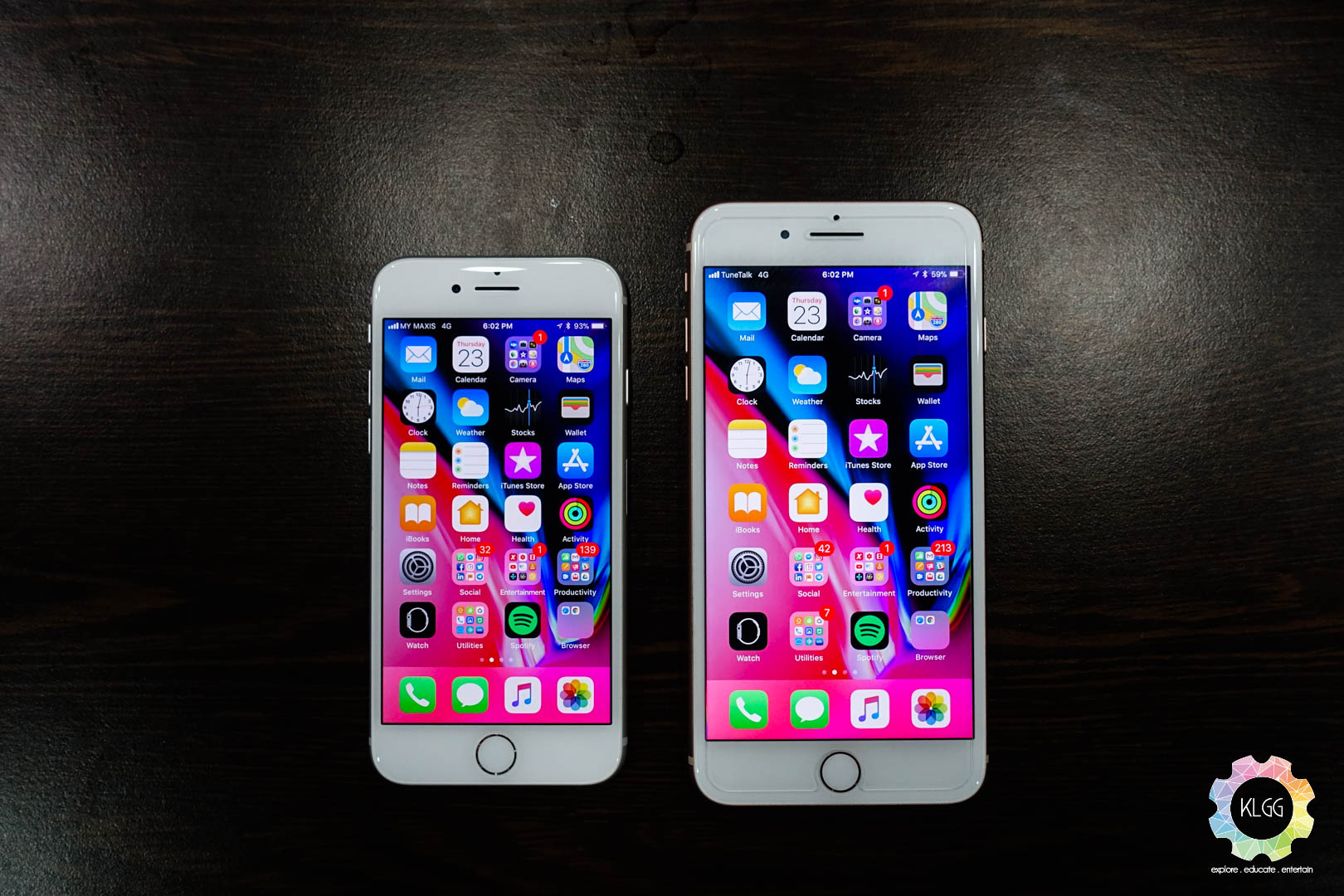 I keep telling people to go for the iPhone 7 instead of the iPhone 8, simply because of the marginal difference in features and significant difference in price, and that verdict unfortunately hasn’t changed much. Granted, the iPhone 8 performs much better with a better processor and camera system, it supports wireless charging and has better battery life than the iPhone 7, but you aren’t missing out on essential features if you already own an iPhone 7. As a matter of fact, the iPhone 8 is made for those looking to upgrade from the iPhone 6 or older, and doesn’t want to pay an extra premium for Animojis and Face ID, it may be dated, but it is still a decent product.
I keep telling people to go for the iPhone 7 instead of the iPhone 8, simply because of the marginal difference in features and significant difference in price, and that verdict unfortunately hasn’t changed much. Granted, the iPhone 8 performs much better with a better processor and camera system, it supports wireless charging and has better battery life than the iPhone 7, but you aren’t missing out on essential features if you already own an iPhone 7. As a matter of fact, the iPhone 8 is made for those looking to upgrade from the iPhone 6 or older, and doesn’t want to pay an extra premium for Animojis and Face ID, it may be dated, but it is still a decent product.
The Good
- Great performance
- Improved camera system
- Wireless charging
- 4K 60 fps video recording a dream for content creators
The Not So Good
- Expensive
- Quick charger and cable not included
- Outdated design




